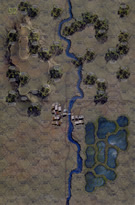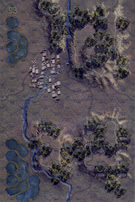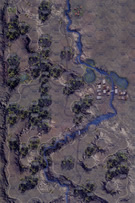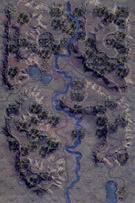| Author |
Arborec88
|
| Method |
Solo |
| Victor |
North Korea |
| Play Date |
2016-12-12 |
| Language |
English |
| Scenario |
KWPP028
|
It has been a few years since I played this scenario but I still remember it vividly.
The Americans set up the bulk of the infantry in the suburbs of map 93. A few smaller units held some of the satellite towns and villages. Single leaders with a platoon were placed in as many settlements as could be spared without compromising the main defense of Taejon. All positioned within range of US artillery.
US long range artillery was dug into the tops of the highest surrounding hills and infantry was deployed alongside, dug into the slopes to defend against NK incursions.
The first NK wave came from the North, masses of infantry began ascending the steep slopes towards the gun emplacements. US gunfire was heavy and combined with the artillery devastating, the NK first wave withdrew.
Over the coming turns more NK amassed in the North and a second force now came from the south picking off some of the isolated villages along the trails, heading towards the open rice fields beyond.
An Eastern NKPA contingent began manoeuvering itself along the banks of the river toward the nearest town. Unfortunately for the defends, artillery support was unavailable due to events closer to the gun batteries and so the NKPA managed to eventually reach Taejon relatively unmolested.
US forces shifted from the Western to the Eastern side of the Taejon to receive the approaching force.
It was at this point that the NK units in the North decided they had enough manpower to storm the nearest hill and take out the US gun emplacements. Within the hour the Americans on the hill were in disarray and eventually destroyed as a fighting unit.
The US commander decided to detach a small force of some 40 men to engage the enemy by ferrying the men up the steep trails with trucks to take out the spotters. Fierce fighting broke out all across the horizon as dawn finally broke.
With the US player now weakened in the town, the NK units began squeezing the last remaining units. T34s entered from the North and thrust straight towards the town. Some were knocked out on the river bridge by a few lucky bazooka rounds but the NK kept coming.
It was around 8 in the morning when the US commander accepted defeat.
The NK forces now held the hills overlooking the town, no cohesive US units existed within 2km of Taejon and the last of the US hilltop artillery fell silent as no leaders were left to assign targets.
Taejon itself fell silent with T34s on its North bank and columns of NK troops entering from the South and East.
A victory for the NKPA and a crushing defeat for the US.
In hindsight the US placing its guns on the hills may not have been the best strategy BUT it did force the NKPA to deal with the threat from on high. The US players limited resources proved a challenge but this scenario is what gaming the Korean War is all about!
|


 KWPP027
KWPP027 










































